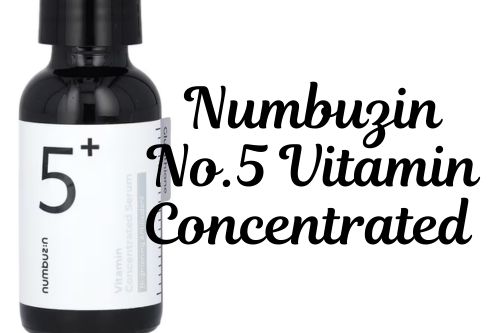How to Deal with Peeling Skin
What is Peeling Skin?
Peeling skin, medically known as desquamation, happens when the outer layer of your skin (the epidermis) begins to shed. This is usually part of the skin’s natural healing process, often triggered by irritation or damage.
The causes can vary widely, from environmental factors like sunburn or extreme dryness to underlying skin conditions such as eczema, psoriasis, or fungal infections. Sometimes, peeling is a reaction to allergies, certain infections, or even medical treatments like chemotherapy or radiation. While it’s typically a sign that your skin is regenerating, it’s important to address the root cause to ensure proper care and healing.
Appearance of Peeling Skin
Peeling skin often has a thin, flaky, or scaly texture that can look uneven and dry. It might also feel itchy, inflamed, or irritated, depending on the cause. This peeling represents the natural shedding of the epidermis, the outermost skin layer.
The epidermis plays a vital role in protecting your body from bacteria and external irritants while continuously producing new skin cells. When peeling occurs, it’s usually a sign that your skin is in recovery mode, working to replace damaged cells with fresh ones.
Common Causes of Peeling Skin
Peeling skin can result from a variety of factors, including:
- Skin Damage: Burns, sunburns, or repeated friction can harm the skin’s barrier, leading to peeling.
- Diseases: Conditions like eczema, psoriasis, Kawasaki disease, or rare disorders like peeling skin syndrome can trigger shedding.
- Infections: Illnesses such as scarlet fever, impetigo, or toxic shock syndrome can lead to peeling as part of the body’s response.
- Medications and Treatments: Strong skincare products (like retinol), chemical peels, chemotherapy, or acne treatments often result in skin shedding.
- Environmental Factors: Dry air, excessive sun exposure, or harsh weather conditions strip moisture and damage the skin.
- Lifestyle Factors: Habits like taking hot showers, over-cleansing, or not staying properly hydrated can weaken the skin’s barrier and cause peeling.
How to Repair Your Skin Barrier
How to manage Redness and Irritation
Treatment Options for Peeling Skin
- [Professional Diagnosis]
If peeling skin persists or worsens, a dermatologist can pinpoint the cause through tests like allergy panels, blood work, or a skin biopsy. Proper diagnosis ensures targeted treatment. - [Medical Treatments]
Depending on the underlying issue, doctors may prescribe:- Antibiotics for bacterial infections.
- Antifungal creams for fungal-related peeling.
- Corticosteroids to reduce inflammation.
- NSAIDs for pain and swelling.
- [Home Remedies]
Soothe peeling skin with these simple methods:- Use fragrance-free moisturizers or aloe vera gel to lock in hydration.
- Stay hydrated to improve skin elasticity and healing.
- Avoid pulling or picking at peeling skin to prevent further irritation or infection.
- [Anti-inflammatory Measures]
Over-the-counter remedies like cortisone creams or pain relievers (e.g., ibuprofen) can help reduce redness, swelling, and discomfort.
Additional Tips for Managing Peeling Skin
- [Hydration Matters]
Drink around 64 ounces (2 liters) of water daily to keep your skin hydrated and support its natural repair processes. - [Moisturize Regularly]
Use unscented, hypoallergenic moisturizers to lock in hydration and soothe irritation. Applying immediately after bathing can help seal moisture. - [Steer Clear of Irritants]
Minimize exposure to harsh chemicals, extreme temperatures, and friction from tight clothing or rough fabrics. - [Natural Remedies (Use with Caution)]
Some people find relief with:- Honey: Known for its soothing and antibacterial properties.
- Baking Soda Baths: May ease irritation and discomfort.
- Menthol Shaving Cream: Offers a cooling effect for temporary relief.
Prevention Tips for Peeling Skin
- [Protect Your Skin]
- Apply sunscreen daily to shield against harmful UV rays.
- Wear protective clothing like hats or long sleeves when outdoors.
- [Gentle Skincare Practices]
- Use mild, fragrance-free cleansers to avoid stripping your skin.
- Wash with warm water instead of hot, which can dry out the skin.
- Avoid harsh exfoliants or aggressive scrubbing to prevent irritation.
- [Hydrate Your Environment]
- Use a humidifier to add moisture to the air, especially in dry or heated spaces, to keep skin supple.
When to Seek Medical Help
Peeling skin can sometimes signal a more serious issue. Consult a healthcare provider if:
- The peeling is unexplained or covers a large area.
- It’s accompanied by fever, chills, or signs of infection, such as redness, swelling, or pus.
- The condition persists despite home treatments or worsens over time.
Timely diagnosis can help identify underlying causes and ensure proper treatment.














Post Comment